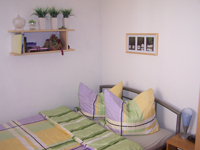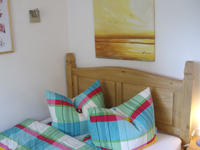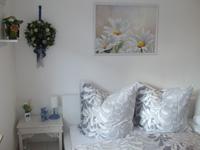Apartment Cologne presents: The Westdeutscher Rundfunk in Cologne
The WDR is a so-called Landesrundfunkanstalt , ie an institute of public law, which is located in the state of North Rhine-Westphalia with its headquarters in the city of Cologne. The business areas are radio and television. The WDR is a Landesrundfunkanstalt of the ARD and in its structure a broadcaster of the ARD. With regard to the total number of employees, WDR is even the second largest station in Europe . Bigger is only the BBC. The WDR was born in 1956 and was created by splitting the NWDR into today's WDR and the NDR.
.jpg)
The productions of the WDR
There are productions for the first. For the first German television the WDR supplies many formats like e.g. the "broadcast with the mouse", the show "Monitor" or the "ARD morning magazine", the sports show or well-known daily soaps such. The "Forbidden Love" or the legendary "Lindenstraße".
WDR TV program
The commonly referred to as the third television program WDR television resulted from a time in Germany, where is only the first and the ZDF as so-called full programs for the television audience was. Regional television broadcasts were broadcast as so-called third programs.
The radio programs of the WDR
The WDR has a variety of radio stations and radio programs. We just want to list these briefly here:
- A youth station for a clearly young target group aged 14 to 38 years is the radio program 1LIVE
- WDR 2
- WDR 3 with a high percentage of special music like eg. Jazz music or classical music
- WDR 4 program focuses are hits and oldies
- WDR 5 focus here educational and information programs
- Cosmo international radio broadcast in more than 10 languages
Other digital radio broadcasts include:
- 1LIVE Diggi
- Kira K
- WDR Info
- WDR event
- WDR Vera
- WDR 1
- WDR 2 Classic
- 1LIVE Art
- WDR on the Internet
All programs of German broadcasting are complemented by various services on the Internet and also accompanied by teletext. The WDR has its own Internet editorial office, which selects and prepares appropriate broadcasts and radio broadcasts.
.jpg)
.jpg)
Own magazine
WDR even has its own print magazine. This is published every month and presents the latest options from internet radio and of course television.
Funding the transmitter
The station is mainly financed by the relatively unpopular broadcasting fee (GEZ). The WDR receives e.g. in 2010 over one billion euros from broadcasting fees revenues. In addition, the WDR of course also sells advertising space in television programs or in radio programs. This task is taken over by WDR mediagroup. In the advertising business, WDR achieves, for example, in 2011 a total of about 36 million euros. In relation to the broadcasting fees certainly Peanuts.
.jpg)
Critical Voices to the Sender
In the 70s, the WDR came into the criticism when he was called by a party in Germany as so-called "red radio". Since a relative proximity to the SPD was said. Furthermore, the one-sided reporting was criticized. This was allegedly fixed on the metropolitan area of North Rhine-Westphalia and the Ruhr area.
Furthermore, the Westdeutscher Rundfunk gets into criticism as the chairman of the program committee complained about that is relatively difficult to dismiss a program complaint. In addition, there was negative press from a non-public art collection, ancillary income of individual employees, and sexual harassment in the workplace, which were not adequately addressed or punished.
History of the WDR
In the years 1923 to 1924, the then new area was supplied with a basic structure of radio stations. However, the then Allied forces prohibited the construction of radio stations in the occupied territories. Therefore, the first transmitter was built in the then unoccupied Münster. In July 1924, the Lorenz transmitter was installed. Finally, on September 15, the foundation of the "Westdeutsche Funkstunde AG" took place. In the following years there were various companies that were installed or founded. In 1925 the occupation of the then Ruhrgebiet ended and radio licenses were given in abundance to the former "black listeners". Number of official Higher thus rose rapidly.
History from 1927
The terrific success meant that Westdeutscher Rundfunk AG inevitably had to expand or open to the west. In 1926 the headquarters of the transmitter was moved from Münster to Cologne . This ultimately led to a renaming of the station to the Westdeutscher Rundfunk AG in 1927. The seat of the Westdeutscher Rundfunk AG was then in the Cologne Dagobertstraße 38th .
Konrad Adenauer in his capacity as Lord Mayor of Cologne is relocating the transmission system to Cologne Raderthal or advocating their installation there. It was a masterpiece because there were 94 places for the installation of the transmitter applied.
National Socialism
In 1933, the National Socialists are allowed to power in Germany. Immediately, propaganda minister Joseph Goebbels used the existing broadcasting landscape and rebuilt it, in his favor. Almost all directors were dismissed. Also, at least 13% of all employees were spontaneously fired in April 1933. The Program Advisory Council was dissolved at short notice in order to be able to implement all interests of the National Socialists unhindered. The "Reichsrundfunkgesellschaft" took over the power and the nationalization of the "Westdeutscher Rundfunk AG" was implemented in the short term . In this context, the name was changed to "Reichssender Köln".
From then on, various mergers of individual stations to the so-called Sender Group West followed. The only goal of these mergers was a saving of about four million Reichsmark . Cologne was responsible for the symphonic music and the so-called physical exercise. Funnily, so-called "gymnastics programs" were broadcast on the radio program. Furthermore, many programs were deleted from the program to save more money. As a result, numerous authors editors and artists were unemployed and a huge anger was preparing. In order to appease the angry people, a special distribution was initiated, originally "because with hundreds of free artists a Christmas joy can be prepared."
.jpg)
1936 was a collaboration between the State Academy of Music in Cologne and the then Reich transmitter Cologne. Already during the Second World War the "Reich transmitter Cologne" was dissolved. This is done in the night between the 28th of June and the 29th of June 1943.1948 a new radio house was built in the center of Cologne. It is located very close to Cologne Cathedral and bore the name "Funkhaus Wallrafplatz" . Board at this point the Hotel Monopol, which has been almost completely destroyed during the war. The remains of the hotel were actually integrated into the new construction project to counteract the shortage of material after the war. This measure saved a considerable part of the building substance and therefore also many costs.
In the Federal Republic
After the war on 4 May 1945 called "Radio Hamburg" started. In the further course, this construction developed into Nordwestdeutscher Rundfunk . As already mentioned above, the main station was Hamburg.
The NWDR
You started with a relatively clear supply structure: the NWDR had only one program . In 1950 the program was expanded with two regional radio programs. Incidentally, the NWDR also became a founding member of the so-called ARD. During these years, the reconstruction of German television began. In Cologne, they started in June 1952 with the opening of the Funkhaus Wallrafplatz, which was responsible for the broadcast of the first television program. A legendary 200 television viewers could be provided in the Cologne region so. Years 1955 the broadcasting situation in Germany was again regulated. As a result, the NWDR has been split into two parts . The NDR was responsible for northern Germany and the Westdeutscher Rundfunk Köln supplied the state of North Rhine-Westphalia. So to speak, this was the birth of WDR Cologne in its current structure.
.jpg)
.jpg)
.jpg)
The Cologne radio programs start
In the year 1956 it started immediately with the radio stations WDR 1 and WDR 2. In the following years the info channel WDR3 was added.
First steps of German television
In the years 1963 to 1969 there was a so-called "color television experimental laboratory" in Cologne Ehrenfeld . There would be the introduction of PAL color television for Germany. The first devices of this series of experiments can still be seen today in the Bergische Universität Wuppertal. There they are available for public viewing. The ARD Sportschau was also produced in Cologne and is still a household name to viewers today.
The Third TV Programs
In 1965 it started with their own third TV programs. We have already reported on this at the beginning of the text.
Teletext
At the beginning of the 80s the first regional videotext service was launched or made available. It is a pure textual representation of information. Today we can smile about it.
In the 80s
In 1984, another radio service was launched: It is the so-called WDR 4 transmitter.
.jpg)
.jpg)
.jpg)
Targeting the Youth
In 1995, the WDR 1 program was completely reconsidered . This was the birth of 1Live, so to speak. In 1999, an international radio situation was installed, from which the so-called "Funkhaus Europa" resulted.
The WDR and the Internet
Welcome to the new world! In 2000, the so-called Internet offensive started on our popular WDR. The Internet should be able to complement radio program and the television program perfectly. An Internet editorial office was therefore founded. Immediately started a funny fight for various domain name or endings. The WDR wanted to fight for the domains WDR.org, WDR.com and WDR.de absolutely. Furthermore, in the year 2004 started the production of digital and thus high quality television offerings. At World Youth Day in 2005, WDR launched a true
pope offensive . More than 700 employees were active!
The building in Cologne
It's not just a building in Cologne, but there are even nine buildings in the city center that WDR uses for its purposes. As already reported above, we started with the so-called Funkhaus Wallrafplatz , which has been extended over the years more and more addresses are the "home law school" or z.b. the "house Berlich" on the Breite Straße in Cologne other houses are the WDR archivhaus roller the four-wheel house. At the Appellhofplatz there is the so-called WDR Filmhaus and there is also the WDR Arkaden. The WDR mediagroup can be found in Cologne in the Ludwigstraße numero 11.
The Studios
WDR has numerous production facilities . In addition to the Cologne studios, there are also studios in the cities of Dusseldorf Dortmund Aachen Bielefeld Duisburg Essen Muenster Siegen or in Wuppertal. Numerous offices can be found, among others, in the district So So in Hochsauerlandkreis Minden Krefeld Ahaus Rheine Arnsberg Kleve or Detmold. This list is not complete. Of course, such a large station also has so-called foreign studios. These can be found, for example, in the cities of Warsaw Amman Moscow New York, Paris Washington or in Brussels.
The own orchestra
The WDR not only has broadcasting stations and production facilities, no, it also has four wonderful orchestras on offer. These are in WDR Rundfunkchor, the popular WDR Funkhausorchester, the WDR Sinfonieorchester Köln or the popular Bigband Köln.
Various participations
WDR has participated in numerous other broadcasters or companies. Here is the list again not final but should only offer a group rough overview. Among other things, WDR is involved in the German Press Agency in Hamburg, the KölnMusik GmbH, the broadcaster Arte Germany TV, the ARD and ZDF Media Academy, the sports rights and marketing agency based in Munich, the European Center for Media Literacy in Marl, in the German Television Award Cologne, the Civis Medienstiftung GmbH with seat in Cologne, the radio NRW from Oberhausen, the Adolf Grimme institute for media and education and culture with seat in Marl and naturally also the WDR Media Group with seat in Cologne which for the marketing of Advertising space of any kind.
Accommodation in the city center of Cologne!
You want to walk to the cathedral? You want to walk to the fair? Then book our Apartment Cologne, then you can easily reach the Cologne Cathedral on foot! Just cross the Rhine over the Deutzer bridge and stroll through the old town. In about 14 minutes you have reached the cathedral! We look forward to your inquiry!






